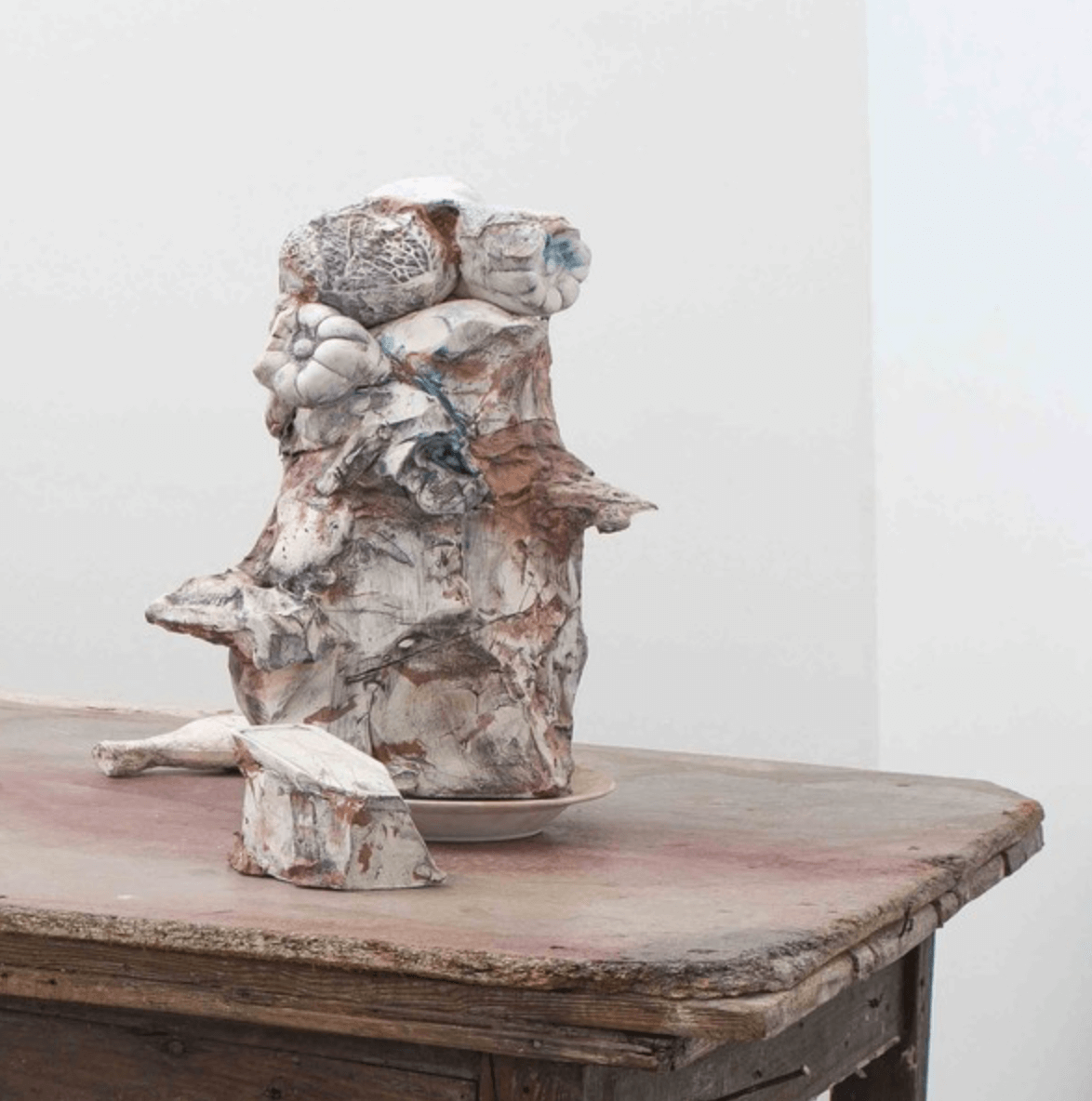It’s our goal to cover as much of the contemporary ceramics world as possible.It pains us to let an exhibition go unmentioned.So in order to scoop up as many worthy shows as we can, we run this column, “Exhibitions in Brief.”Justin Rothshank loves decals.Working with utilitarian forms, such as the mug, Rothshank hand-makes all of his forms on the wheel and through multiple firings, adds the decals.Recently he has collaborated with his wife, Brooke, to create decal mugs of history’s peacemakers, such as Nelson Mandela, Martin Luther King Jr., and Malala Yousafzai, which have been paired with miniaturist paintings of the peacemaker.Justin also makes handmade mugs with decals of other popular icons.Their show, Instruments of Peace, took place at Bluffton University (Bluffton, Ohio, October 7 – 30th, 2015).

Courtesy of Justin Rothshank.

Justin Rothshank, Malala Yousafzai mug.Image courtesy of Bluffton University Art Department.Click to see a larger image.


Antonella Cimatti at La Scultura Ceramica Contemporanea in Italia (installation views). Photographs courtesy of the artist.

Butterflies by Antonella Cimatti. Courtesy of the artist.

Ani Kasten, Double Vessel with Rough Terrain, black stoneware, 24 x 8 x 13 inches.Click to see larger image.

Bodil Manz, Macedonia II , porcelain, 7 x 9 inches.Click to see a larger image.Photos above courtesy of Lacoste Gallery.

Ashley Howard, Stoneware Font, 2009, Winchester Cathedral.

Francesco Ardini, Manufatto Fossile Barocco, 2015, Ancient Plaster Molds, Chalk, 24.4 x 24.4 x 12.2 inches.Courtesy of the artist.

Francesco Ardini, Convivio Sacrificio (Detail), 2014, ceramic, various oxides, semi-matt crystalline glaze, “raffietti” tools, wooden table, 51.6 x 32 x 56.9 inches.Click to see a larger image.Courtesy of the artist.

Vinod Daroz, Silent Shloka.

Eva Koťátková, Collection of Suppressed Voices, 2015, steel, fired clay, baskets, and wood.Courtesy of Frieze Art Fair.

Eva Koťátková, Collection of Suppressed Voices, 2015, steel, fired clay, baskets, wood, installation.Click to see a larger image.
“When I imagine our history, I see a column, stacked with sections that are slices of time, some glorious, or skewed, some ambitious, some collapsed. I love the reality of an ancient object, one that has been seen in varied manifestations through time; once perhaps useful, then a discard, then a discovery by an archaeologist, an object of study, then swooned over in a museum, then maybe again, found lying on its side in a storage room, or on the floor of a gallery, being grouped with other objects by a curator who is piecing together another, more complicated story.”
What do you think of this assortment of contemporary ceramics?Let us know in the comments.




Add your valued opinion to this post.